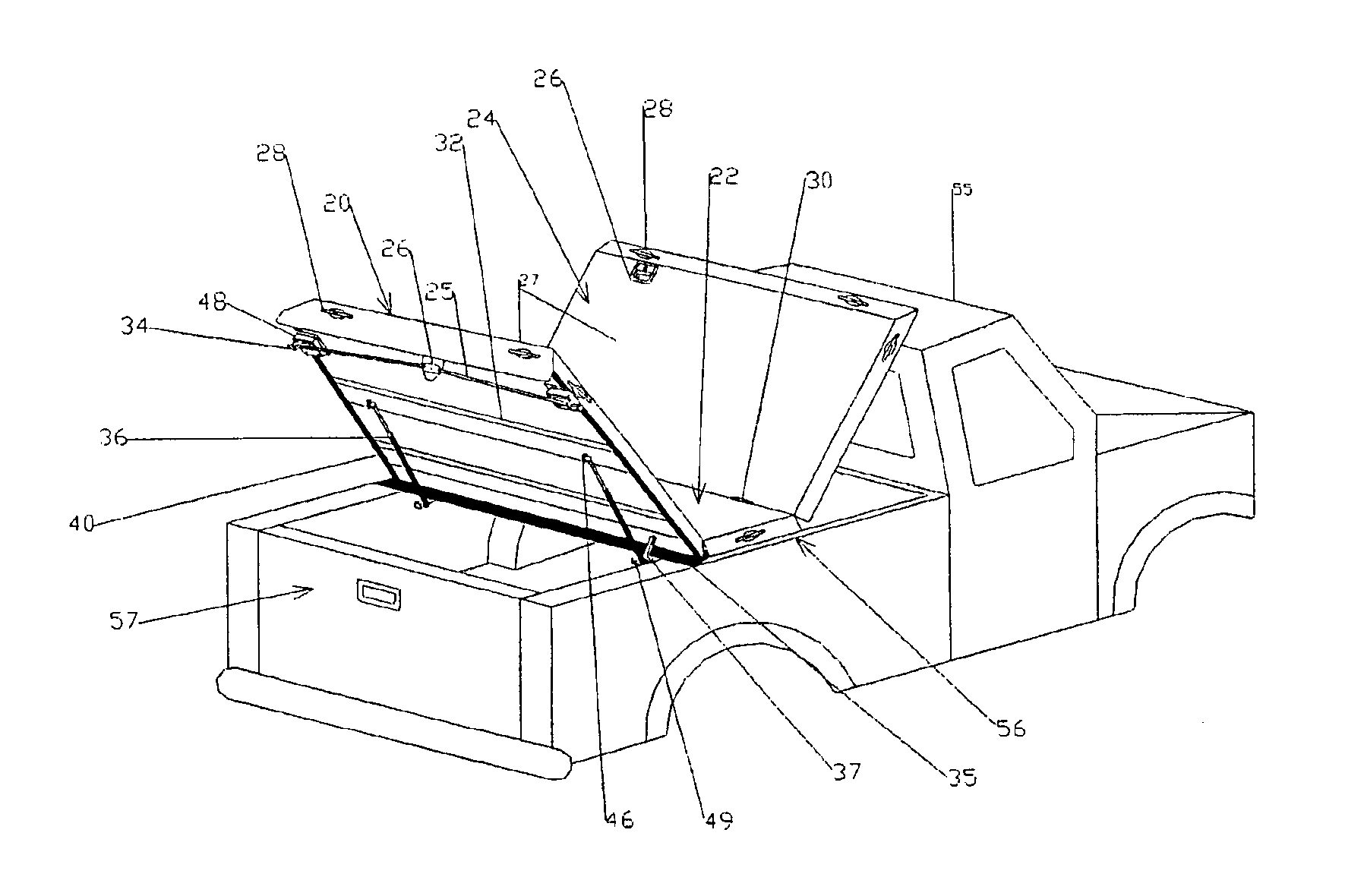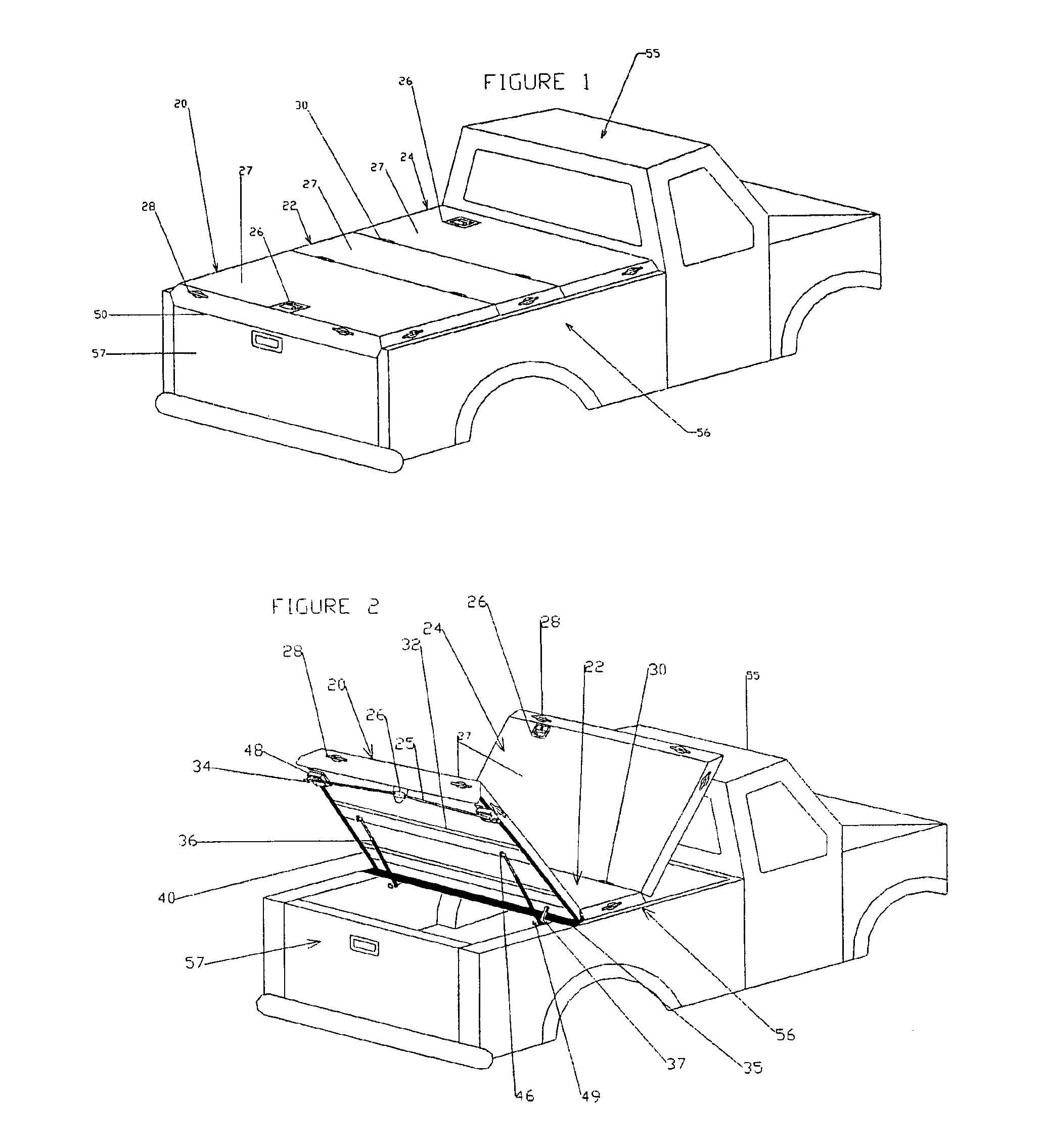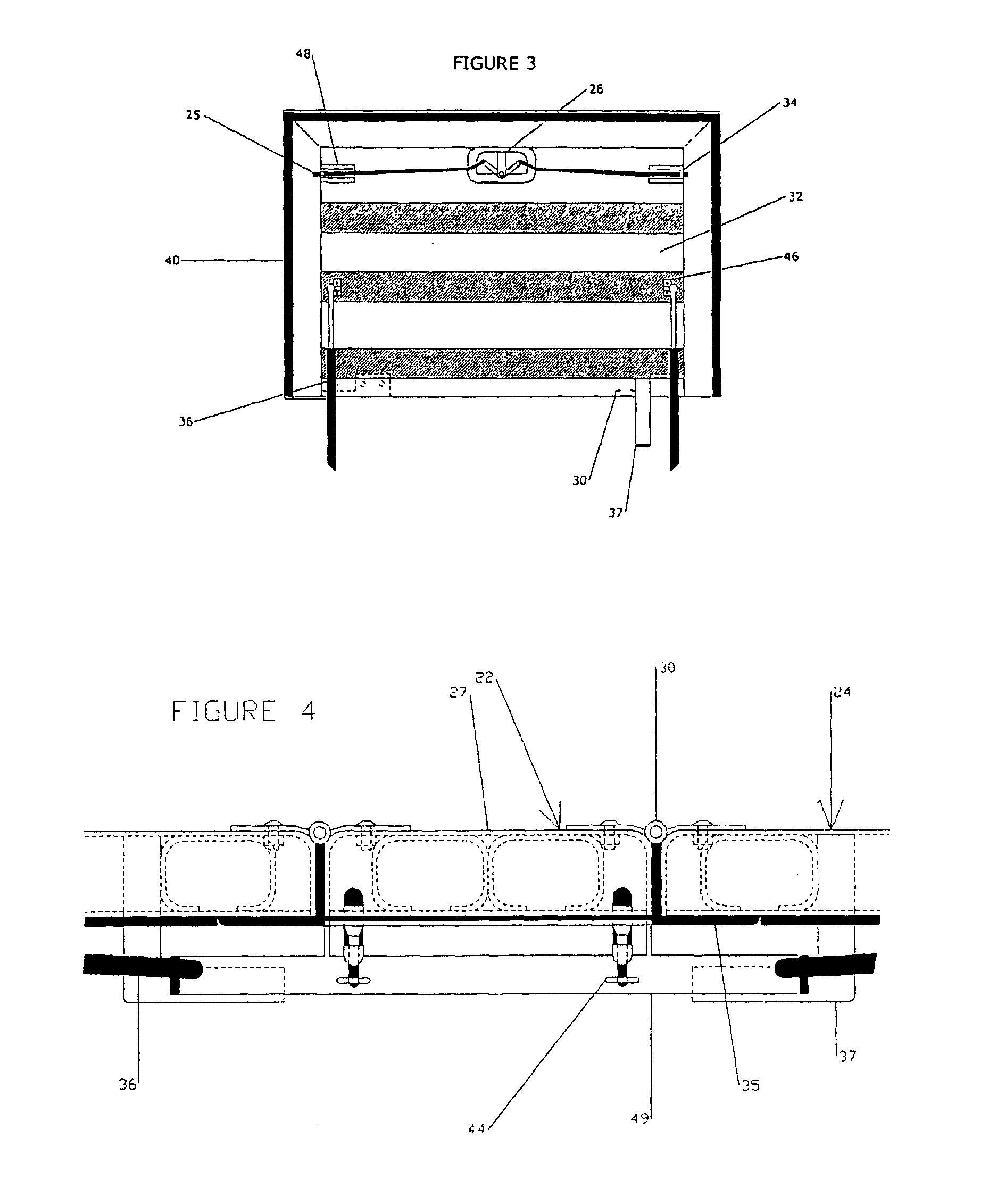Hinged tonneau cover for transporting a significant top load
a tonneau cover and significant technology, applied in the direction of roofs, load transportation vehicles, vehicle components, etc., can solve the problems of poor weather resistance, poor weather resistance, and inability to properly store valuable items,
- Summary
- Abstract
- Description
- Claims
- Application Information
AI Technical Summary
Benefits of technology
Problems solved by technology
Method used
Image
Examples
Embodiment Construction
[0032]FIG. 1 is a partial perspective view of the cover according to the three-panel embodiment of the present invention, shown in closed position and installed on a pickup truck. The view is shown from the right hand side of the pickup truck, looking down at the bed. The cover in this embodiment includes a tailgate panel 20 located closest to the tailgate of the pickup truck 57. The tailgate panel 20 is attached by separable hinges such as slip joint hinges 30 to a center panel 22. At least one panel, here the center panel 22 is secured to the top portion of the bedrail 56 by removable attachment means 44, here shown as a plurality of C-clamps (as further detailed in FIG. 13). The preferred placement of the center panel 22 and attachment means 44 can be clearly seen in FIG. 8. The center panel 22 is also hingedly attached to a cab panel 24 located closest to the cab compartment of the pickup truck 55, and to the tailgate panel 20, by hinge means 30, here shown as slip joint hinges....
PUM
 Login to View More
Login to View More Abstract
Description
Claims
Application Information
 Login to View More
Login to View More - R&D
- Intellectual Property
- Life Sciences
- Materials
- Tech Scout
- Unparalleled Data Quality
- Higher Quality Content
- 60% Fewer Hallucinations
Browse by: Latest US Patents, China's latest patents, Technical Efficacy Thesaurus, Application Domain, Technology Topic, Popular Technical Reports.
© 2025 PatSnap. All rights reserved.Legal|Privacy policy|Modern Slavery Act Transparency Statement|Sitemap|About US| Contact US: help@patsnap.com



